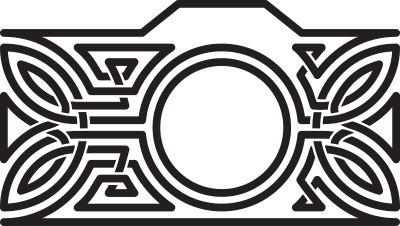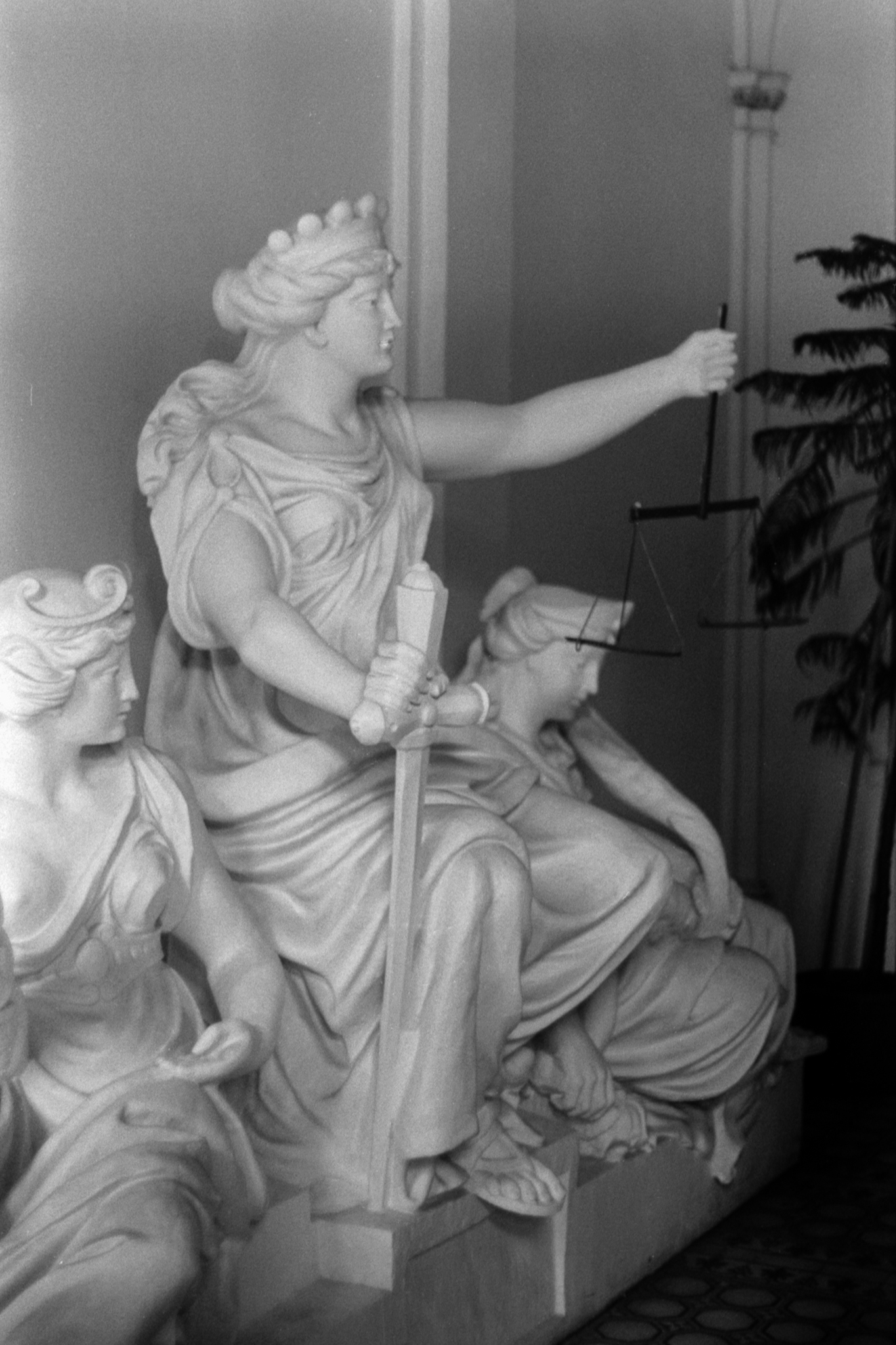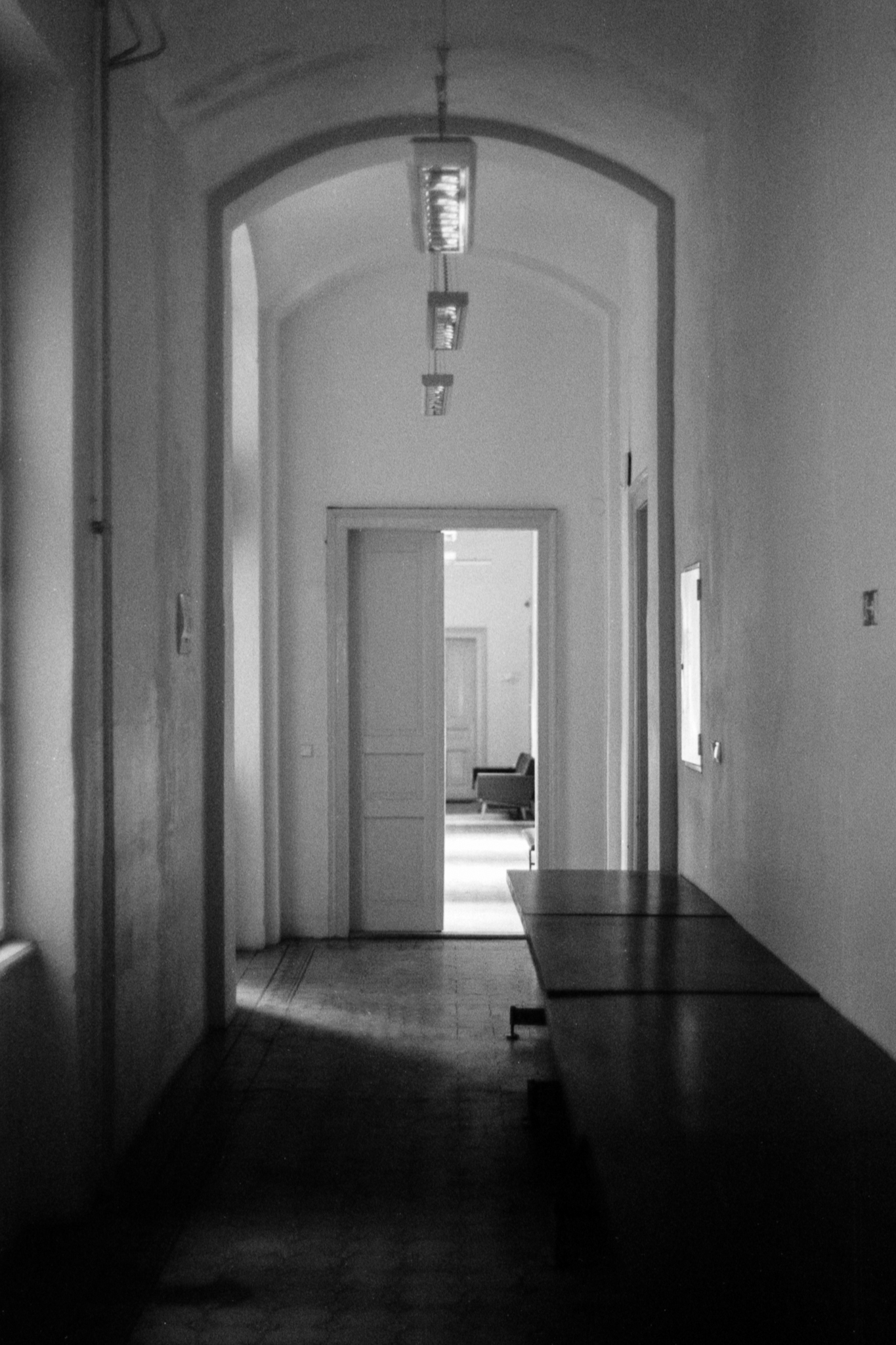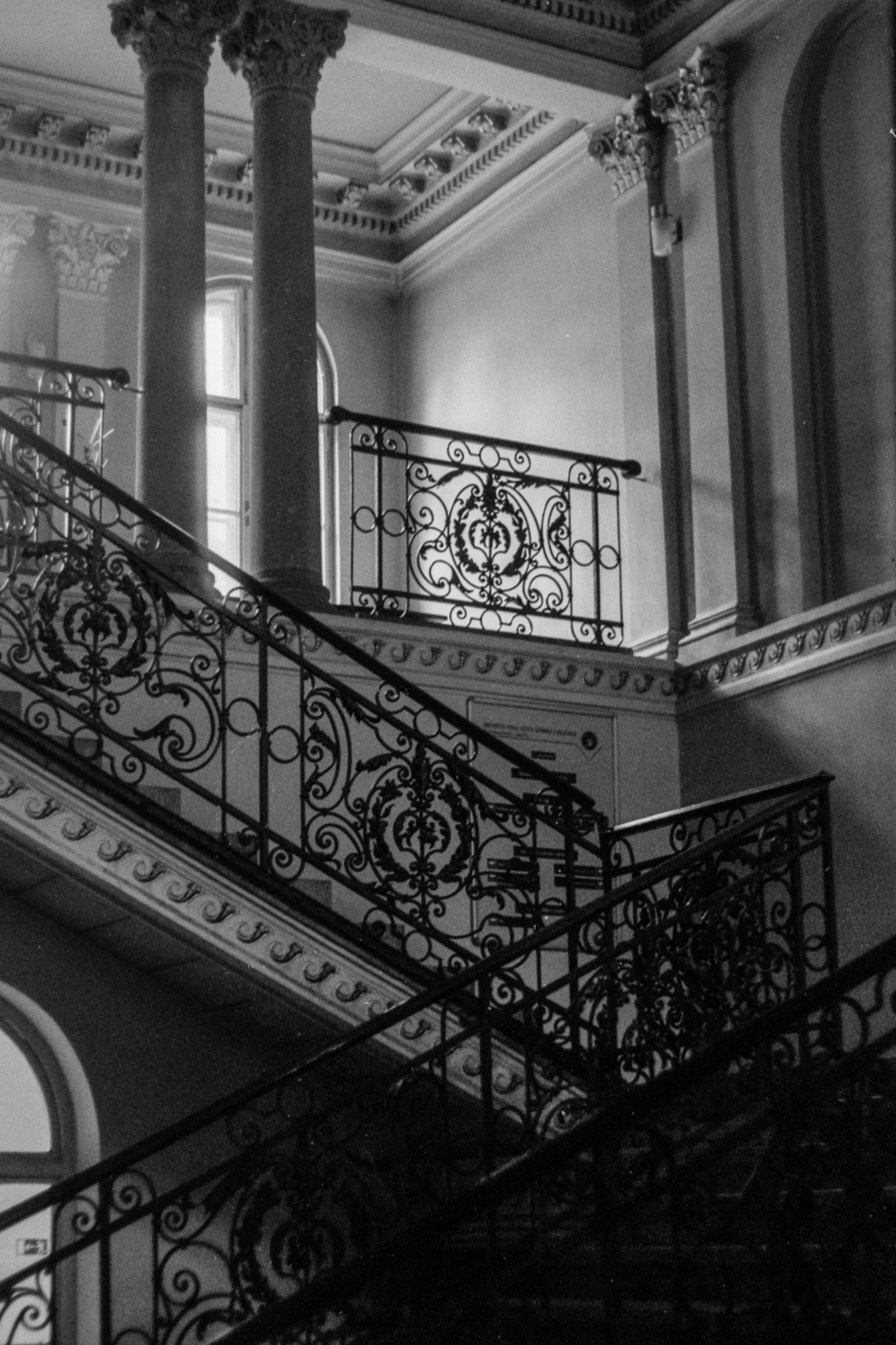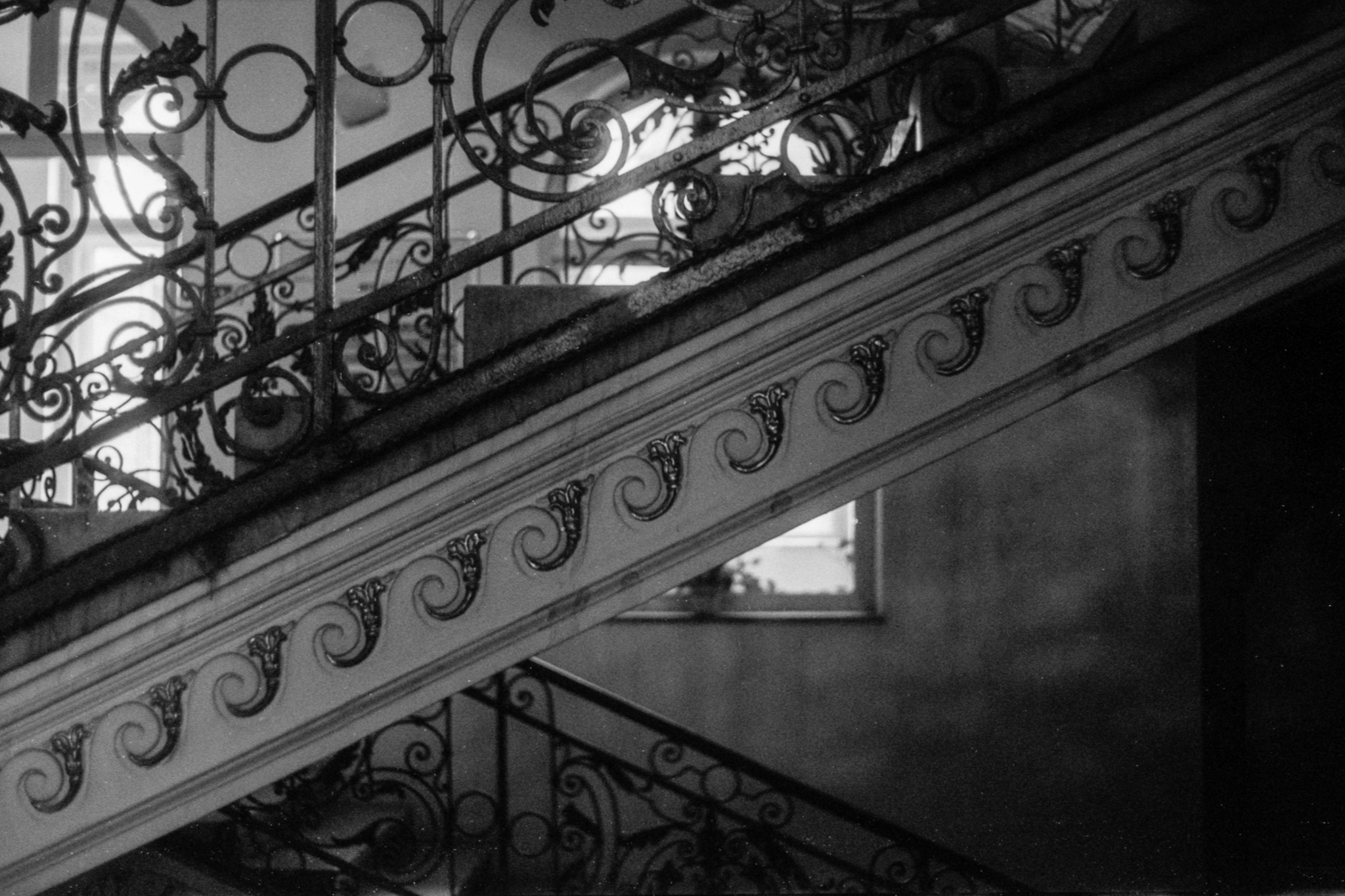 The Exakta VX1000 was a high-end but dated camera from the original Ihagee camera works. It was the final and finest version of a series that began in 1936 with the Kine Exakta. Mine is from 1969 or thereabouts, just before production ended in 1970. The Kine Exakta was a very important camera in the history of photography as it was the first 35mm SLR in series production so there is some pedigree behind this machine. In its day, the Exakta was an expensive camera. It was very well built, featured a lot of technical refinements and was aimed squarely at wealthy enthusiasts. If you wanted a beautiful rangefinder, you bought a Leica but if you wanted an SLR, you bought an Exakta. By the time production ended, the design was getting a bit long in the tooth however and the new features offered by Japanese camera manufacturers had made it more or less obsolete. By the time this model was produced, the original Ihagee works in Dresden was firmly under the control of the USSR via the proxy of the DDR. Ihagee, along with other photographic firms based in Jena and Dresden, were folded in to the Pentacon conglomeration. There had been a legal challenge from the original owner of Ihagee (who had set up a new company using the same name in the Netherlands), and so the cameras were no longer badged as Ihagees, but they were still known as Exaktas. Earlier versions still have the Ihagee name stamped into the top plate, but mine just says ‘Aus Dresden’.
The Exakta VX1000 was a high-end but dated camera from the original Ihagee camera works. It was the final and finest version of a series that began in 1936 with the Kine Exakta. Mine is from 1969 or thereabouts, just before production ended in 1970. The Kine Exakta was a very important camera in the history of photography as it was the first 35mm SLR in series production so there is some pedigree behind this machine. In its day, the Exakta was an expensive camera. It was very well built, featured a lot of technical refinements and was aimed squarely at wealthy enthusiasts. If you wanted a beautiful rangefinder, you bought a Leica but if you wanted an SLR, you bought an Exakta. By the time production ended, the design was getting a bit long in the tooth however and the new features offered by Japanese camera manufacturers had made it more or less obsolete. By the time this model was produced, the original Ihagee works in Dresden was firmly under the control of the USSR via the proxy of the DDR. Ihagee, along with other photographic firms based in Jena and Dresden, were folded in to the Pentacon conglomeration. There had been a legal challenge from the original owner of Ihagee (who had set up a new company using the same name in the Netherlands), and so the cameras were no longer badged as Ihagees, but they were still known as Exaktas. Earlier versions still have the Ihagee name stamped into the top plate, but mine just says ‘Aus Dresden’.
Mine was given to me by a friend who inherited it from her father, a former professional photographer. It is not in good condition and I intend to find a friendly repair shop to give it a good overhaul. Externally, it looks fine, the chrome is clean and hasn’t worn off the corners, the leatherette covering is in good shape with only some minor scuff marks on the front. Internally however it’s not such a happy little machine. The shutter curtain doesn’t close properly at speeds below 1/30s, the advance lever doesn’t return by itself as it should and I’m deeply suspicious of the shutter accuracy at higher speeds. I still put a roll or two through it, because come on, look at it! It is a beautiful camera with some typically German design quirks.
not in good condition and I intend to find a friendly repair shop to give it a good overhaul. Externally, it looks fine, the chrome is clean and hasn’t worn off the corners, the leatherette covering is in good shape with only some minor scuff marks on the front. Internally however it’s not such a happy little machine. The shutter curtain doesn’t close properly at speeds below 1/30s, the advance lever doesn’t return by itself as it should and I’m deeply suspicious of the shutter accuracy at higher speeds. I still put a roll or two through it, because come on, look at it! It is a beautiful camera with some typically German design quirks.
Most obviously is the strange placement of the shutter button. It’s on the front plate, not angled up as on Prakticas, but pointing straight ahead. It’s also on the left of the body. With the standard 50mm ƒ/2 CZJ lens, there’s a separate shutter button on the lens itself that actuates the button on the body. The lens button also has a crown that lets you select a long or short throw for the shutter release – useful for when you are using a cable release with a short plunger. There’s a little cover just above the button on the body that you can swing down to prevent the shutter from firing too. The shutter itself is the usual Leica derived horizontal cloth affair. You can select speeds from 1/1000s down to a massive 12 seconds plus a B and T mode. The speeds below 1/30s are set with a separate shutter dial – the large, multi-function dial on the right of the top plate. In other unusual placement news, the advance lever is on the left and swings out clockwise. There’s a frame counter (which counts down rather than up) co-axial with that, then, next to it is the fast speed selector with the sprocket disengage button nestled between them. On the right is the aforementioned multifunction dial. As well as handling slow shutter speeds, it also acts as an ISO reminder dial and as the self-timer winder.
 On the bottom are three feet, which all have additional jobs to do. One is a film type reminder dial, another is tapped for the tripod bush while the third houses the rewind crank. There’s also a small knob (missing on mine) that pulls down a built in film cutter inside the camera so that you can change reels partway through a roll. As you might expect, with the advance lever and shutter release on the left, the film is also loaded the opposite way around to normal. The canister goes in on the right and the take up spool is on the left.
On the bottom are three feet, which all have additional jobs to do. One is a film type reminder dial, another is tapped for the tripod bush while the third houses the rewind crank. There’s also a small knob (missing on mine) that pulls down a built in film cutter inside the camera so that you can change reels partway through a roll. As you might expect, with the advance lever and shutter release on the left, the film is also loaded the opposite way around to normal. The canister goes in on the right and the take up spool is on the left.
The quirky design takes a bit of getting used to, your right index finger keeps hunting for that shutter button. It’s also not super comfortable to hold, the strongly angled front doesn’t give you a very large grip despite the fairly significant physical size of the thing. Holding it in portrait orientation is very awkward because it’s not easy to find the shutter button when you’re holding it that way, but it is super easy to find the lens release lever. More than once I accidentally separated the lens from the body while focusing because of that. The viewfinder is nice and bright however, and it’s also modular. You can take off the whole prism and replace it with a waist-level finder or a different prism. Third party manufacturers produced metered prisms for the Exakta and, in some markets, those were supplied as original equipment with new cameras. Mine has a badly scratched fresnel screen, but it is replaceable separately from the rest of the prism. Various different focusing screens were made and these are commonly available in the used market. There’s no other metering available on the camera, which is a big part of why it was losing ground commercially. Even in the ’50s, most cameras had at least an uncoupled lightmeter and coupled lightmeters along with TTL metering and even automatic exposure modes were coming onto the market throughout the 1960s.

There’s no accessory shoe, an optional removable one can fit onto the viewfinder, but I don’t have one. You do get not one, not two, but three PC sync sockets however. The body doesn’t have an auto diaphragm, but the lens does thanks to that separate shutter button. I have two lenses with this bayonet mount, a 50mm ƒ/2 CZJ Pancolar which is supposed to be very good indeed, and a 200mm ƒ/4 Meyer-Optik Görlitz Orestegor. Both of the lenses are clean and in perfect condition, the long lens in particular shows very little sign of use.
